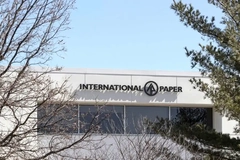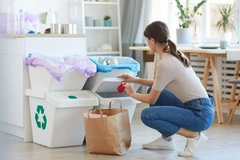Adios aluminum: Tetra Pak’s fiber-based barrier for food cartons represents CO2 reduction breakthrough, says product director
12 Jul 2022 --- Tetra Pak’s new fiber-based barrier for food cartons will provide a major boost to carbon reduction and recycling efforts, according to Davide Braghiroli, the company’s product director for packaging materials. In this interview with PackagingInsights, Braghiroli explains why replacing the conventional aluminum layer in food cartons can reap significant environmental rewards and the importance of considering the product life cycle when implementing such changes.
The “industry-first” fiber-based barrier is currently on shelf for commercial consumer testing for food carton packs distributed under ambient conditions, with further technology validation scheduled later this year.
Where are the environmental benefits of this fiber-based barrier?
Braghiroli: The new fiber-based barrier is composed of paper and barriers. Engineered combinations of paper and barriers serve to secure the necessary barrier to light and oxygen to protect the content inside the package. This is one of the key roles of the aluminum layer in our current ambient portfolio. Early results suggest that the package with a fiber-based barrier will offer substantial CO2 reduction when compared to traditional aseptic cartons, together with comparable shelf life and food protection properties. We believe this development will therefore act as a breakthrough in reducing climate impact.
Moreover, the fiber-based barrier increases the attractiveness of carton packages for paper mills because of higher renewable content, as the aluminum layer is removed and replaced by a fiber-based barrier. We believe that this concept presents clear potential for realizing a low carbon circular economy for packaging. It also supports end-user expectations. Based on recent global research, approximately 40% of consumers confirmed they would be more motivated to sort for recycling if packages were made entirely from paperboard and had no plastic or aluminum. Tetra Pak says fiber-based barriers replacing aluminum in food cartons will boost CO2 reduction amid growing climate change fears.
Tetra Pak says fiber-based barriers replacing aluminum in food cartons will boost CO2 reduction amid growing climate change fears.
How important is it to consider the product life cycle when swapping out aluminum?
Braghiroli: Transformational and collaborative innovation is critical to accelerate pace in this domain because shifting from an aluminum layer to an alternative barrier has implications that impact the full system. The implications span across the packaging material composition, the opening or closure, and the sealing technology. The aluminum layer in aseptic cartons has both a functionality to protect food from oxygen and light, and a technical purpose, because it is responsible for the sealing of the cartons in the filling machine. Therefore, it is critical to use the full product life cycle as the compass guiding our development, including, for instance, supplier collaborations and recycling assessment.
Tetra Pak highlights that the aluminum layer contributes one-third of the GHGs linked to its base materials, despite being thinner than human hair. How is this possible?
Braghiroli: There are two key reasons why finding alternatives to aluminum foil is good from an environmental perspective. Firstly, aluminum is a non-renewable material, requiring complex and energy demanding processes. We need to shift from high-carbon, fossil-based materials to low-carbon, renewable ones, as they help us to avoid draining our planet of resources. This is essential to our low carbon circular economy approach.
Secondly, the recycling capacity of the aluminum component from post-consumer cartons is lacking on a large scale, so both upstream and downstream action is needed to accelerate a progressive change. Upstream, replacing the aluminum foil with more compatible materials can significantly help; downstream, cross-border collaboration and co-investment with recyclers and industry players are key for expansion at scale. Results suggest the fiber-based barrier delivers comparable shelf life and food protection to aluminum-lined cartons.
Results suggest the fiber-based barrier delivers comparable shelf life and food protection to aluminum-lined cartons.
How does the fiber-based carton barrier support Tetra Pak’s wider goals?
Braghiroli: A 1 liter Tetra Pak carton is typically made of approximately 70% paperboard, 25% plastic and 5% aluminum. All of these materials, including the aluminum, are recyclable, where efficient waste management and recycling infrastructure is in place. But we are keen to evolve and adapt, taking into account rapidly changing scenarios and growing expectations from customers, society and regulators. Our aim is to develop the world’s most sustainable food package, a carton that is fully made of responsibly-sourced renewable materials, fully recyclable and carbon-neutral. Replacing the aluminum foil is one of several important actions to be able to realize this goal.
What are the next steps for this breakthrough project?
Braghiroli: Our fiber-based barrier is currently suitable for dairy and similar products, as it protects the contents of the carton from light and oxygen. We plan to extend the product categories coverage offered by our fiber-based barrier. However, this will become clearer once we have concluded the testing phase to verify the technical maturity, and collected the relevant learnings. We have a well-defined roadmap, including various stages that will help us realize the company’s ambition – the ultimate sustainable food package. Next steps will include working on the future generations of alternative barrier solutions, while reducing plastics and finding further options to maximize the fiber content of our packages.
By Joshua Poole












